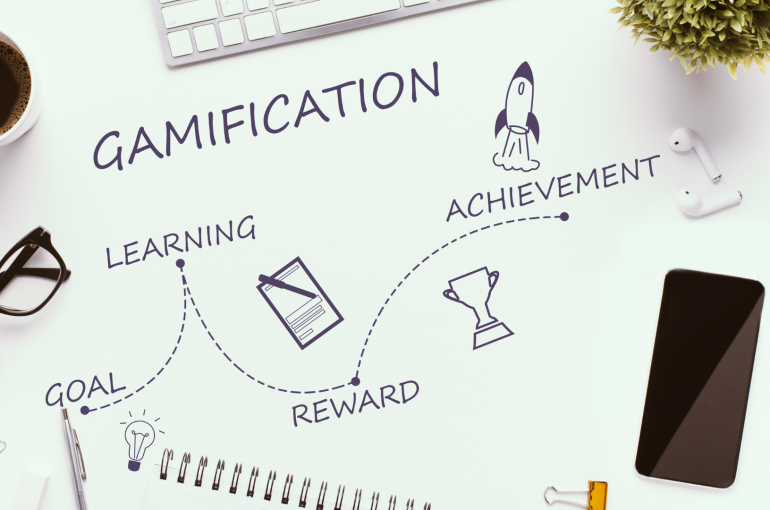Why Gamification is the Important Factor for Elearning

What does Gamification mean?
Gamification refers to the inclusion of game elements into any process that would otherwise be unobstructed from the likes of games. The EdTech industry is one such industry that was somewhat orthodox and alienated from the concept of games embedded into Elearning platforms until the last decade.
The widespread acceptance of game elements into the EdTech industry is only about a decade old since the emergence of 3g and 4g internet. However, the inclusion of minute game elements even in physical learning began as early as the 19th century, when scientists and chemists used gamification to learn and remember the periodic table of elements.
In this article, let’s dive deeper into understanding the gamification of classrooms and the EdTech industry and see how it can contribute to making learning simpler and more inclusive for everyone.
How has the EdTech Industry Taken Advantage of Digitalization?
Every year, the EdTech industry is constantly evolving, practicing and introducing new concepts. More importantly, the gamification in Elearning platforms has led to a shortening in the generation gap between students and teachers, which has allowed teachers and students to connect well with each other and have a deeper understanding of what concept to teach in what way. Gamification of education has resulted in over 30 percent increase in average test scores.
Virtual advancements have helped teachers reach out to students even when they are unable to attend classes or grasp certain concepts. Virtualisation has helped the education industry in more ways than one, and gamification is the next step in improving the education system one step at a time. This has revolutionized education so much that more than 65% of students now prefer education methods that include game elements.
Although digitalization has greatly helped with the revolution of the EdTech Industry, there are still a few setbacks here and there that we have yet to overcome. Teachers with generational gaps are facing bigger problems than students who need help grasping concepts. The use of digital tools like smart projectors and interactive whiteboards is another long-overdue step.
Why Gamification?
Let’s take a look at the features that make gamification in the EdTech industry and Elearning platforms noteworthy.
Gamification as a concept has many noteworthy features-
Interactivity and Immersion
Educational materials on Elearning platforms can be gamified easily. Educational content that is already present on Elearning platforms in the form of video graphics and text-based content can be gamified to make the learning experience more immersive and enjoyable. Elearning platforms in the EdTech industry also have game elements that require students to interact with each other as well as the teachers, which makes the learning experience more receptive and open to feedback. Having interactive game elements also means that students are going to be more competitive which would naturally result in higher absorption of information.
Retention of Knowledge
The primary purpose of education is to gain knowledge, and the EdTech industry strives to constantly improve the delivery of knowledge as well as make sure that students retain that knowledge forever.
Gamification helps with the retention of knowledge by introducing point and reward-based incentives to students. This helps drive the motivation to partake in games and activities that promote learning and the consumption of educational content on Elearning platforms.
Practical Knowledge
One of the biggest hurdles that schools and learners face is that they absorb theoretical knowledge, but a majority of these learners don’t gain any practical knowledge. The application of concepts in real life is just as important, if not more important than theory. Gamification in Elearning platforms helps students and teachers access practical knowledge with ease and convenience.
Various features of the concept of gamification have each helped the EdTech industry in their ways. There are many qualities and skills that students often develop through unorthodox methods like the use of games in the classroom, which has helped the EdTech industry learn from new insights and statistics each year.
Improved Focus
Gamification has contributed to improving the focus of students as well as teachers in the EdTech industry. This is possible due to improvements in various features like engagement, feedback, goal setting, interactivity, personalization, etc.
Gamification has improved these aspects by instilling features like communication, receptiveness, etc into games that are used in the classroom.

Fine Motor Skills
Gamification in the EdTech industry has also contributed to the development of fine motor skills in students with the help of various games. Various features like interactivity, touch control, sensitivity training, etc have been simplified because of gamification in the EdTech industry that a student would otherwise have a very hard time learning.
Gamification in the EdTech industry is one of the most contributory factors of improvement in focus amongst school children. Challenged-based games have led to an increase of more than 85% improvement over traditional lectures. Incorporation of elements in the classroom like puzzles, touchscreen activities, drawing apps, feedback and progress tracking apps, etc have greatly reduced the time and effort it takes for a student to develop fine motor skills.
Detailed Feedbacks
Gamification in the EdTech industry has not only helped students but has also helped teachers recognize students’ weaknesses and strengths. There are many features of gamification like performance metrics, adaptive learning systems, formative assessments, data analytics, etc that have helped students and teachers gather insights into their performances and understand better how to improve them.
Many gamified EdTech platforms offer insights into various performance metrics of students to help teachers understand them better.
Confidence and Communication
Gamification of EdTech platforms has contributed majorly to the betterment of communication as well as the confidence of students. Reward-based games have been used since the start of gamification and have often helped students motivate themselves. Other features of gamification like progress tracking, collaborative learning, role-playing, team building, peer feedback, etc have contributed to boosting the confidence as well as communication skills of students. 67% of students feel that gamified learning is more engaging and motivating.
Conclusion
In this day and age where technology is an important aspect of education, both industries are symbiotic. We at Appfoster take pride in being big-scale contributors to the EdTech industry. Having created frontend and backend software for major players in the EdTech industry, we vouch for our decades of experience. Contact us to learn more about our EdTech services and more.

